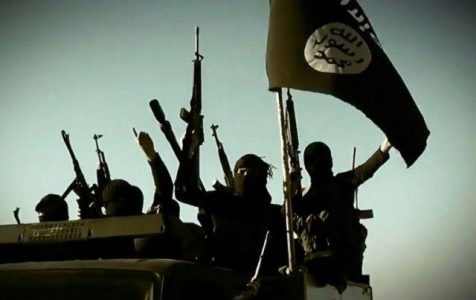
Islamic State terrorists are still forcing Iraqis to pay taxes after Caliphate’s fall
The Islamic State (ISIS/ISIL) continues to pose a menace in some of Iraq’s rural areas, exploiting a security void to extort taxes and terrorize the local population even after the recent demise of the terrorist group’s so-called caliphate, Kurdistan 24 learned from residents and officials on Tuesday.
“[ISIS] movements have become intensified,” an unnamed villager from a region in rural Iraq that still houses members of the jihadi group, told Kurdistan 24. “They go into the villages at night … and demand taxes in sheep, goats, and one hundred thousand [Iraqi] dinars [roughly $85] per house.”
“Iraqi forces are there, but they can’t do anything,” another villager told the news outlet on condition of anonymity.
Echoing independent experts, U.S. intelligence and military officials warned that ISIS would remain a threat after the fall of its so-called caliphate that once spawned across large swathes of Iraq and Syria.
Some local officials have cautioned that the group maintains sleeper cells across Iraq and Syria.
Last month, U.S.-backed Kurdish fighters seized the last sliver of territory held by the terrorist group.
Nevertheless, Kurdistan 24 reports:
Though the territorial collapse of the Islamic State in both Iraq and Syria has transformed the group’s methods, the threat posed by it, as military commanders have affirmed, remains palpable. This is especially true in the countryside, where defense forces have difficulty monitoring the group’s activities.
The terrorist organization is thought to maintain a network of hideouts and tunnels close to areas it once controlled following its rise to prominence in 2014. Among these are regions disputed between the central Iraqi government and the Kurdistan Regional Government (KRG).
Consistent with recent reports from the U.S.-led coalition, Kurdistan 24 stressed that “a notorious hideout,” including tunnels, still houses members of the terrorist group in the Mount Qarachokh region of the disputed territory in Iraq.
The Kurdistan 24 article comes over a year after Baghdad declared victory over ISIS in December 2017.
Although the United States has scheduled the withdrawal of most American troops from Syria, an estimated 5,000 are expected to remain in neighboring Iraq.
The U.S.-led coalition continues to conduct airstrikes against ISIS remnants in Iraq and Syria to deal a lasting defeat to the jihadis.
On Wednesday, U.S. Central Command (CENTCOM) — charged with overseeing American military activities in the Middle East — reported that the U.S.-led coalition “remains committed to the enduring defeat of Daesh [ISIS] to improve conditions for peace and stability in the region, and to protect all our homelands from Daesh’s terrorist threat.”
Between March 24 and April 6, the coalition carried out “52 strikes consisting of 98 engagements against [ISIS] targets in Syria and Iraq,” CENTCOM noted.
The U.S.-led alliance reportedly destroyed dozens of vehicles, fighting positions, and supply routes in Syria.
In Iraq, the coalition annihilated “seven tunnels, four supply routes, two buildings, two caves, one command and control center, and one compound,” CENTCOM added.
Source: Breitbart





